Meet the Faculty: Gregg Bordowitz
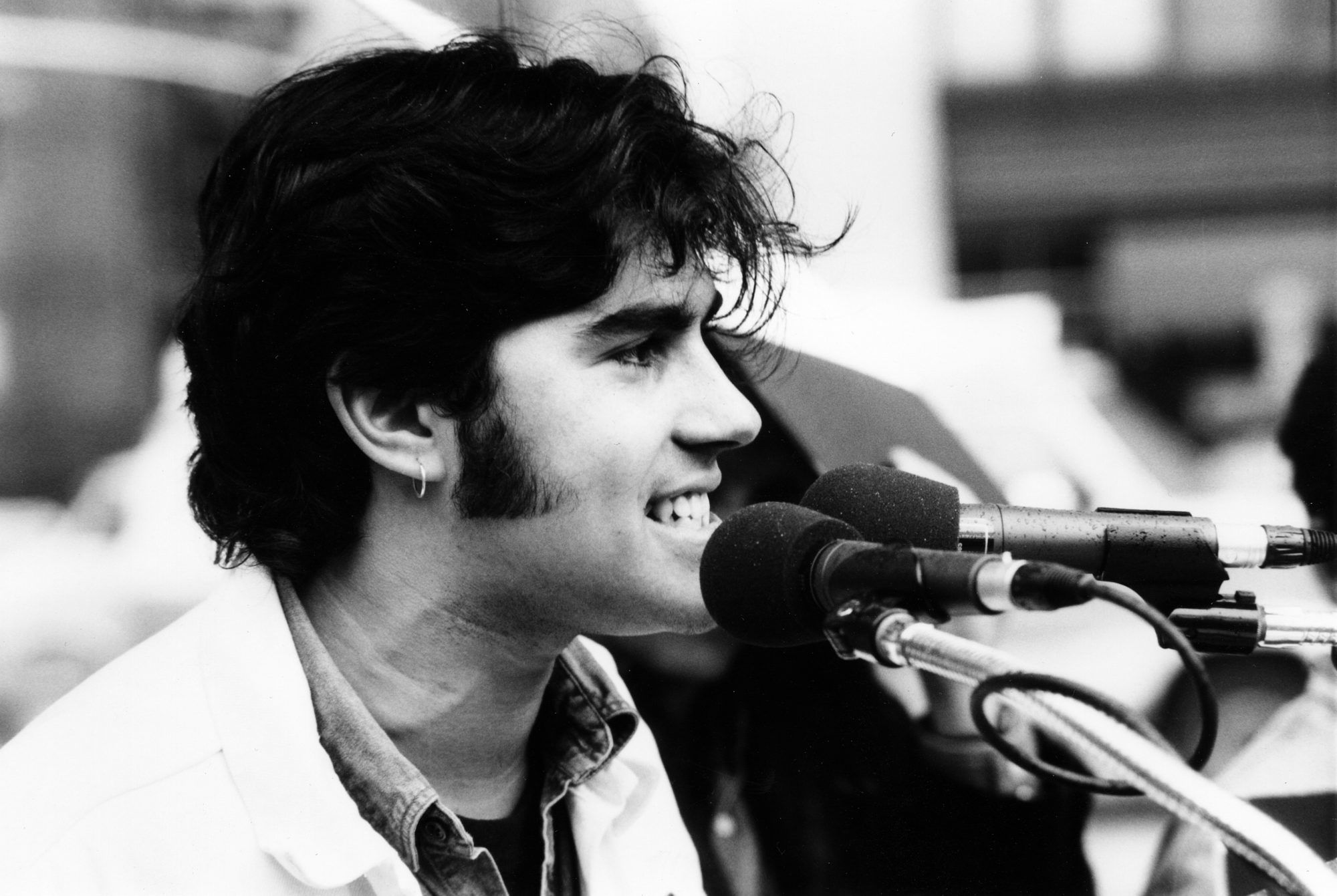
Gregg Bordowitz addressing AIDS activists during a protest in NYC, 1988. Gelatin silver print 8 x 10 in. Image courtesy of the artist. Photo by Lee Snider
Gregg Bordowitz addressing AIDS activists during a protest in NYC, 1988. Gelatin silver print 8 x 10 in. Image courtesy of the artist. Photo by Lee Snider
by Joe Giovannetti
As an adolescent growing up in Queens, New York, all Professor Gregg Bordowitz wanted to be was an artist.
Now, he’s a professor in the School of the Art Institute of Chicago’s (SAIC) Film, Video, New Media, and Animation department and the director of SAIC’s Low-Residency Master of Fine Arts program. In addition to his more than 22-year career at the School, Bordowitz is an award-winning artist and writer; he is the subject of a career retrospective at MoMA PS1 titled Gregg Bordowitz: I Wanna Be Well and the author of Some Styles of Masculinity, coming out in October, and the co-founder of Damned Interfering Video Artists (DIVA TV), the loosely-organized video arm of ACT UP—where his involvement in activism bloomed.
We talked with Bordowitz about his unexpected journey to SAIC, his empathetic and experimental teaching philosophy, and how exposure to art at a young age made him the maker he is today.
Check out Bordowitz's conversation with MoMA PS1 on the making of his new sculpture for I Wanna Be Well, and read our interview with him below.
What brought you to SAIC?
I had a history with the School of the Art Institute going back until the late ’80s. There was an AIDS activist conference that was held at the Art Institute. I remember meeting some of the faculty, and I remember it being a very powerful event.
In 1997, I was asked to be a visiting guest of the video department. Then, the video and the film departments were separate. My partner at the time, Claire Pentecost, accompanied me and was asked to teach in the Photography department. I’m a New Yorker; I had been in New York all my life until that point. I just moved out to Chicago to be with Claire and see what it was like living in another city … and a job opened up in the film department. And so, without planning it really, ’cause I had gone out there just to check out the city, I woke up one day, and I was living in a different city with my partner and working in the film department of the School of the Art Institute in Chicago.
I went to Chicago informed, and knowing how great the School was. I kind of fell for Chicago. Now I’ve taught at the School of the Art Institute for over 22 years.
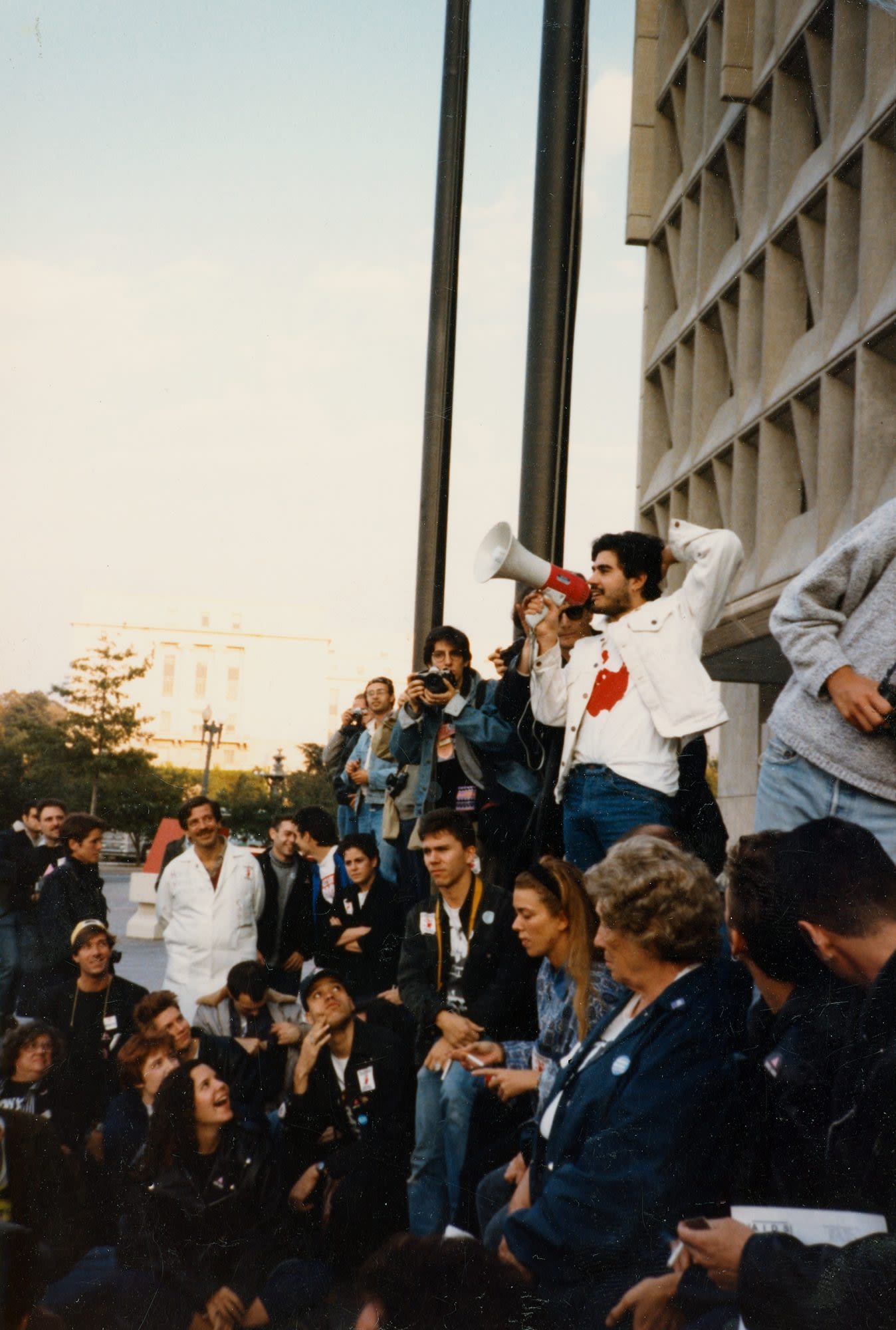
Gregg Bordowitz addressing a crowd in front of the Food and Drug Administration, Silver Spring, Maryland, 1988. Color snapshot. Image courtesy of the artist
Gregg Bordowitz addressing a crowd in front of the Food and Drug Administration, Silver Spring, Maryland, 1988. Color snapshot. Image courtesy of the artist
Why do you teach at SAIC?
I was very much drawn to the history of the School, and especially its film and video histories. I was part of a wave of hires which included Jeffrey Skoller. We were a generation that brought in makers who were also informed by critical theory, of the discussions that had been going on in the art worlds during the ’80s. Identity politics. A connection between art and politics. The relationship between a wider notion of culture and politics. The kind of early formations of how theory would enter into the art world—post-structuralism, and post-colonial theory, and feminism, and queer theory.
We all came out of the ’80s and ’90s informed by deep engagements in the art world with critical theory. So, we brought something new to the Art Institute. Of course, there were Chicago artists who were like-minded and interested in those things. And who brought a big deal of energy into those programs. So, I was part of that.
“I think it’s my job to show up with my genuine enthusiasm and love for art and teach from that place. I’m much more interested in a teaching philosophy that’s about fostering the ground upon which experimentation can unfold.”
What’s unique about the School?
My home department is the Film, Video, New Media, and Animation department. The video and film departments were historically separate departments because artists of the previous generation had made commitments to specific mediums, and there was much value attached to the specific qualities of video as different from film—film being analogue, video being digital.
I like that the Film, Video, New Media, and Animation department’s retained its commitments to a plurality of making—it’s consistent with one of the things I love about the School, which is its core commitment to interdisciplinarity. And as a teacher, that’s what I enjoyed most … I was teaching students from the painting department, performance, from all of the departments in the School.
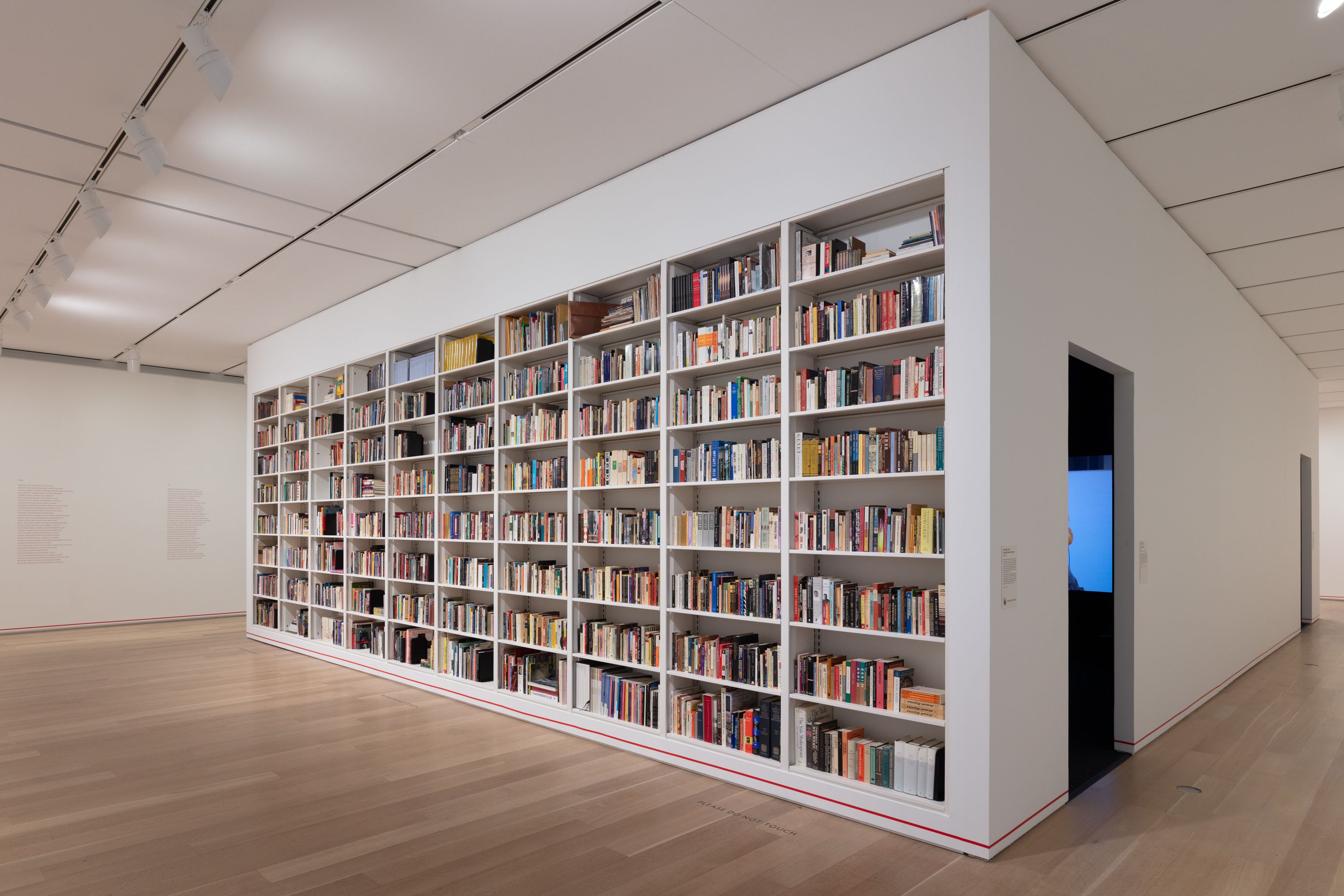
Gregg Bordowitz, I Wanna Be Well, 2019 exhibition, installation view at the Art Institute of Chicago museum
Gregg Bordowitz, I Wanna Be Well, 2019 exhibition, installation view at the Art Institute of Chicago museum
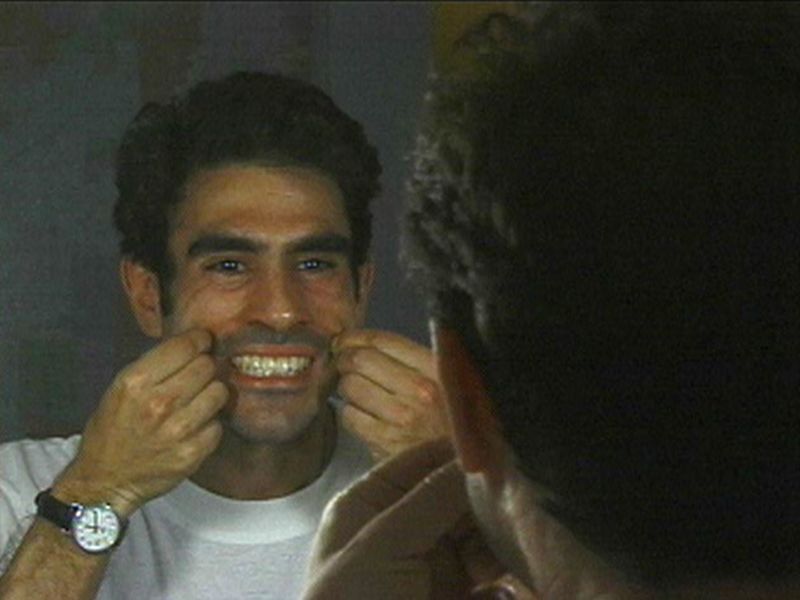
Gregg Bordowitz, still from Habit, 2001. Digital video (color, sound). Image courtesy of the artist and SAIC's Video Data Bank
Gregg Bordowitz, still from Habit, 2001. Digital video (color, sound). Image courtesy of the artist and SAIC's Video Data Bank
What has been one of your favorite courses?
The first and foremost was a class I taught for sophomores called All That Glitters. It was a class based on the writings and thinking of Walter Benjamin, the famous critic and philosopher. It was co-listed between the Film, Video, New Media, and Animation department and the Art History department.
I really thought that theory could be taught to undergraduates. The kinds of theory I’m talking about—continental theory, French philosophy, post-colonialism, queer study, new feminism—they were all being taught at the graduate-student level. And I really thought it would be as important that undergraduates start to engage with these ideas earlier.
What's one key takeaway that you hope all students get from your instruction?
The most important thing for me as a teacher and as a director is to support the aims and endeavors of the students. So, in the Low-Residency program, we support students who are in love with—committed—to clay, to paint, to the histories of specific forms and crafts, while at the same time, creating ways for artists to move across mediums and genres. To experiment. I think experimentation is still at the center of my teaching. But it’s done in a permissive way.
One of the first things I do when I have individual meetings with a student is I ask the student, “Given that all works of art, even works of art that we consider to be masterpieces, succeed in some ways and fail in others, where do you think your work, this work that we’re looking at now, or your work in general, succeeds and fails, and what would you like to do to address that?” That’s where I start. And then, I think it’s my job to show up with my genuine enthusiasm and love for art and teach from that place. And so, I’m much more interested in a teaching philosophy that’s about fostering the ground upon which experimentation can unfold.
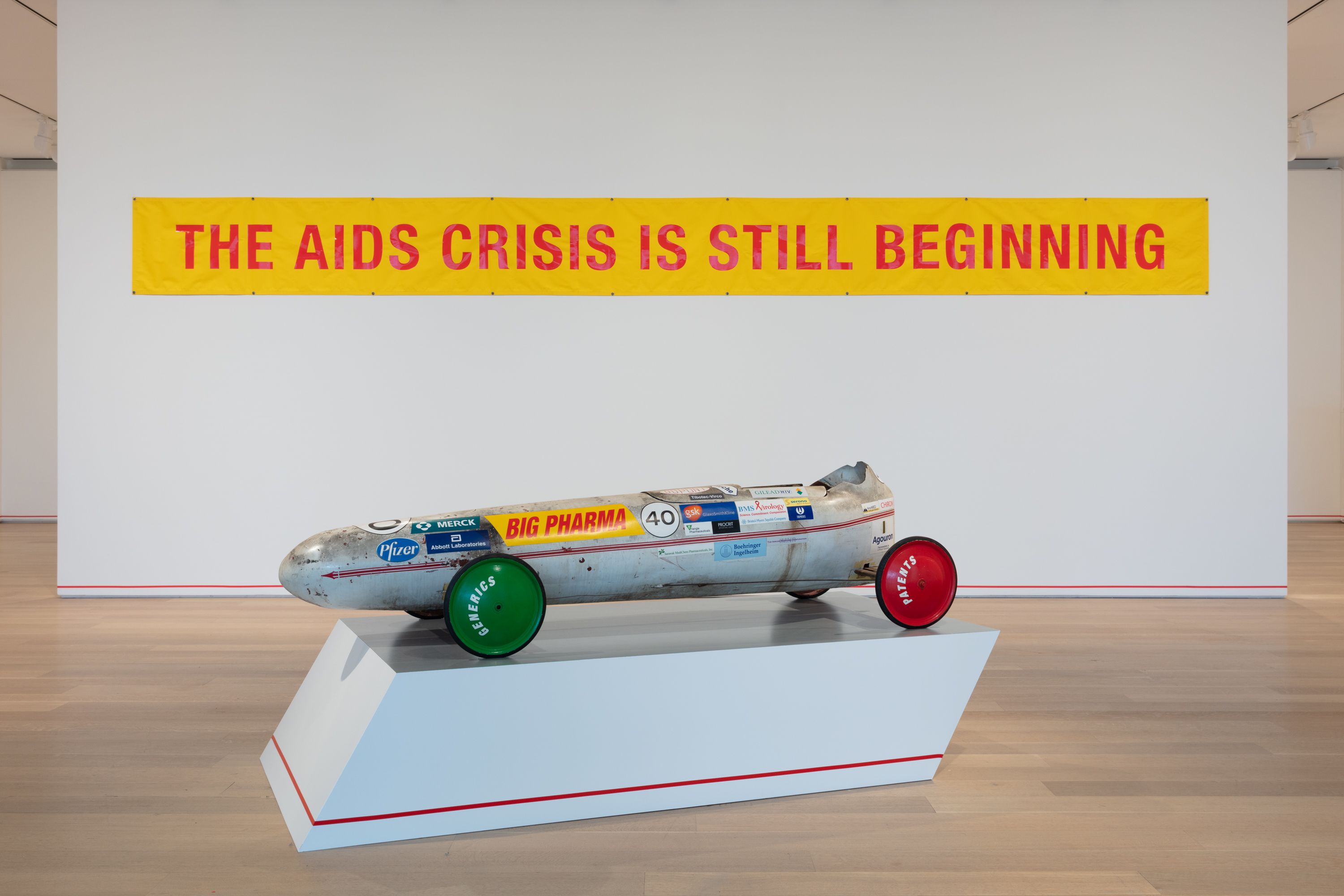
Gregg Bordowitz, I Wanna Be Well, 2019 exhibition, installation view at the Art Institute of Chicago museum
Gregg Bordowitz, I Wanna Be Well, 2019 exhibition, installation view at the Art Institute of Chicago museum
Why do you believe in the importance of an art and design education?
An art and design education gives a person … an environment that fosters creativity and helps students develop these specific modes of inquiry that they need to succeed as artists, designers, and in many other fields. It’s just a fact that a lot of people who go to art schools don’t become professional artists. For many reasons. But the art and design education—there is so much that can be taught from the vantage of considering culture and aesthetics and the important role that [it] plays in shaping the world in which we live.
And so, I am grateful that somehow my path led me to art school ... All I can do is testify to the fact that getting out of high school, being exposed as a young person through public school to art ... [It] opened up a whole world. I was just one of the kids who went queer for art. I just fell in love. And I got to art school, and I saw all kinds of people doing stuff I never even knew was art. It was just amazing that not only the world had expanded, but my understanding of what art could be expanded.
I think that’s what happens for our students. They come to school with more or less awareness of the great diversity of activities that are considered art, and they’re acquainted with the avant-garde idea, [where] art and life merge. I think that’s it. ■
{{[http://www.saic.edu/news/facultystaff]FACULTY AND STAFF}} {{[http://www.saic.edu/news/artconnectsus]ART CONNECTS US}}
